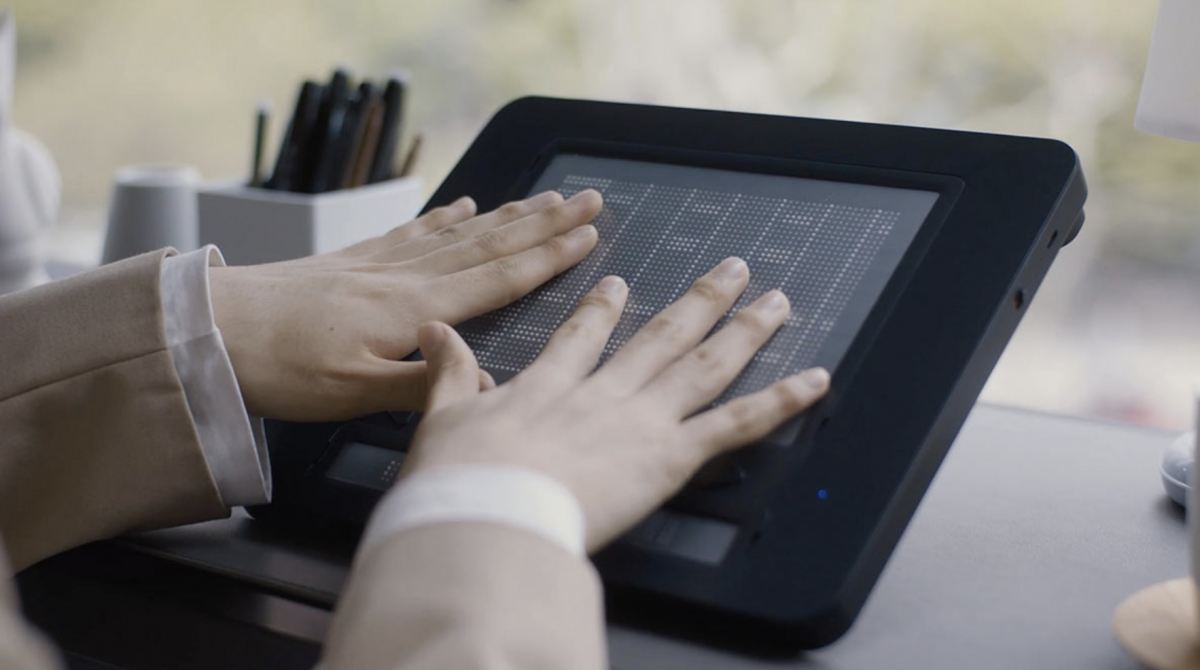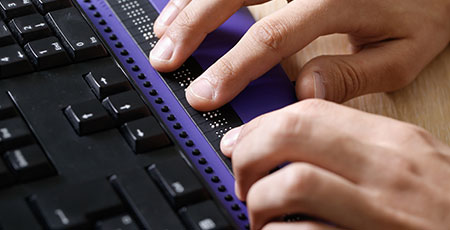Assistive Technology for the Blind: Tools to Transform Lives
Assistive Technology for the Blind: Tools to Transform Lives
Blog Article
Empowering Self-reliance With Assistive Technology for the Blind
The combination of assistive modern technology into the lives of individuals with aesthetic disabilities represents a considerable advancement in promoting independence and self-sufficiency. From ingenious display viewers to advanced wise walking canes, these tools not just boost day-to-day navigation and communication but also encourage users to engage meaningfully in different elements of life. As we discover the myriad advantages and real-world applications of these innovations, it comes to be crucial to analyze the hidden factors that contribute to their performance and the potential for future growths in this important field.
Introduction of Assistive Modern Technology

The development of assistive innovation is based in concepts of inclusivity and empowerment. Developments in software application, equipment, and sensory improvements offer users with alternatives tailored to their certain requirements. From screen viewers that convert message to speech, to responsive devices that share info with touch, these devices change the method people engage with their environments.
In addition to practical applications, assistive modern technology fosters greater social incorporation and engagement in various markets, including education and employment (Screen readers for the blind). As research and development remain to evolve, the potential for assistive modern technology to better boost the lives of visually damaged people continues to be appealing, leading the way for an extra fair culture where every person can grow
Types of Assistive Tools
A variety of assistive devices have emerged to sustain individuals with aesthetic disabilities, each developed to fulfill certain needs and boost daily performance. These devices range from low-tech options to high-tech developments, providing varied alternatives for customers.
Low-tech devices include magnifiers and large-print materials that aid in analysis and writing. Braille tools, such as Braille slates and styluses, make it possible for responsive analysis and interaction. Alignment and mobility help, like white walking sticks, aid users navigate their atmosphere securely.
On the higher end of the range, electronic zoom systems and display viewers provide considerable assistance. Electronic magnifiers permit individuals to increase the size of text and pictures on displays, while screen readers transform electronic content into synthesized speech, helping with accessibility to information on smart devices and computers.
Smart device applications likewise play an important duty, providing attributes like text acknowledgment and navigating assistance. Wearable technology, such as smart glasses furnished with augmented truth, is becoming an encouraging device to improve situational recognition.
Benefits of Assistive Modern Technology
The integration of assistive technology dramatically improves the lifestyle for people with visual disabilities. These modern technologies encourage users by advertising independence, allowing them to browse their settings much more successfully and do daily tasks with higher simplicity. Screen viewers and zoom software program enable individuals to access digital information, fostering academic and professional opportunities that may have previously been out of reach.
Additionally, assistive gadgets such as clever canes and GPS applications offer real-time navigation aid, enhancing wheelchair and safety and security. This boosted autonomy not just improves self-confidence but also motivates social involvement, allowing customers to take part even more completely in their areas.
Assistive innovation also helps with communication, assisting individuals get in touch with others through voice acknowledgment and text-to-speech applications. This ability is essential for preserving partnerships and accessing important details.
Additionally, the customization choices offered with several assistive innovations make sure that individuals can tailor devices to their specific needs, additionally enhancing functionality and efficiency. Overall, the advantages of assistive innovation for people with visual disabilities are extensive, advertising a more inclusive society where every person can seek their ambitions and objectives.
Study and Success Stories
Highlighting the transformative influence of assistive innovation, various study highlight exactly how individuals with visual problems have successfully incorporated these tools right into their every day lives. One compelling example entails an university student that used display analysis software program to navigate on the internet sources and academic materials properly. This innovation not only promoted her education yet also boosted her self-confidence in joining conversations and team tasks.
One more study features a professional who utilizes a mobile phone application created for navigating and item acknowledgment. By utilizing this application, he has reclaimed autonomy in both his individual and workplace, allowing him to commute individually and engage with associates more successfully.
Additionally, a retired person shared her experience with braille e-readers, which enabled her to access a large selection of literature and stay attached with her community with publication clubs.
These success stories highlight the crucial function of assistive modern technology in fostering independence, improving top quality of life, and promoting social combination for people with aesthetic problems (Voice-activated assistive devices). By welcoming these innovative tools, users can get rid of difficulties and confiscate chances that add to their expert and individual gratification

Future Trends in Assistive Innovation
Technology in assistive innovation is positioned to redefine the landscape of support for individuals with aesthetic impairments. Emerging fads emphasize the combination of expert system (AI) and artificial intelligence, which enhance the performance of tools that assist with navigating and details accessibility. For example, AI-driven applications are currently qualified of interpreting visual information in real-time, allowing individuals to involve with their environment much more separately.
In addition, the growth of wearable innovation is progressing swiftly. Smart glasses outfitted with increased fact (AR) can supply audio descriptions of surroundings, changing just how individuals communicate with public spaces. These tools not just promote autonomy yet likewise foster social incorporation.
In Addition, the Net of Points (IoT) is making homes smarter, permitting for smooth connection in between day-to-day devices and assistive tools. This connection encourages customers by enabling computerized feedbacks and voice-activated controls customized to private needs.
Verdict
Finally, assistive innovation plays a pivotal role in empowering individuals with aesthetic problems by enhancing their freedom and engagement with their environments. The diverse variety of gadgets and applications offered not only promotes navigation and interaction but additionally promotes social combination and opportunities for professional and individual development. As improvements proceed in this field, the possibility for improving the lifestyle for those with aesthetic impairments will certainly increase, fostering greater autonomy and empowerment.

Report this page